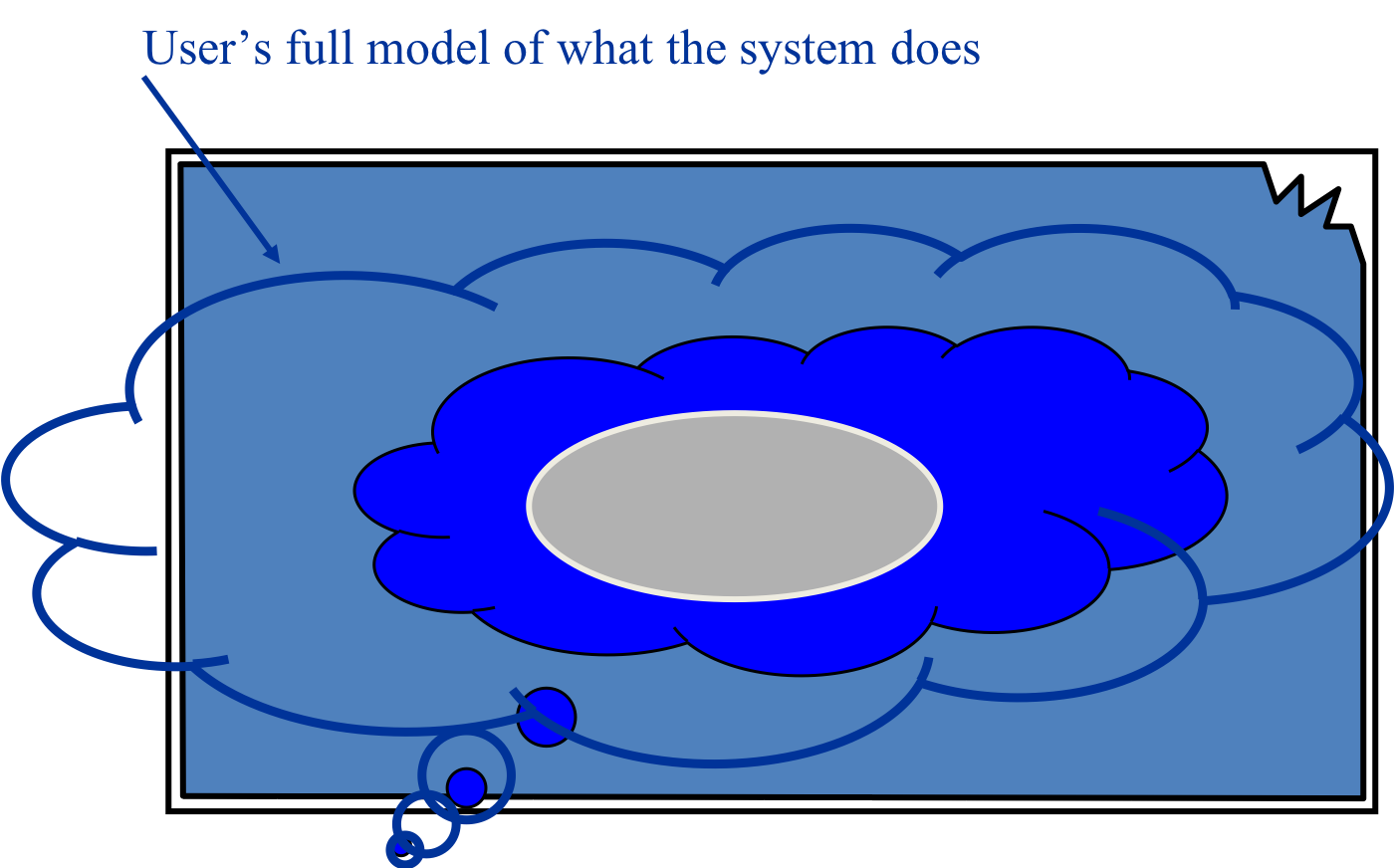name: inverse layout: true class: center, middle, inverse --- # Last Examlet & Feedback Jennifer Mankoff CSE 340 Spring 2019 --- layout: false # Examlet due at 10pm Same content as others AMA today Due at 10pm First: Feedback on class [https://uw.iasystem.org/survey/235661](https://uw.iasystem.org/survey/235661) --- # Affordances & Feedback Good Affordance| Bad Affordance ----|----  |  Well-designed objects have affordances - Clues to their operation that are readily apparent - Often visual, but not always (e.g., speech) - Allows and promotes certain actions ??? Opportunities to act which are readily apparent to the user ... and appropriate to the user’s abilities relationship of affordence and feedback Form “affords” certain actions and makes that apparent --- # Model of Mental Models  ??? - Where are the gulf of evaluation and gulf of execution in this image? Gulf of execution is the user 'error' region (user requests function the __system DOESNT HAVE__), gulf of evaluation is when the user __doesn't realize the system HAS a functionality__. - How does undo help the user bridge them? --- # Undo Sample Q Something other than drawing! Let's try text What should be the "action"? Characters or words? -- - type "helo" - type "world" - undo - undo - type "hello" - redo - type "world" --- # Sensing and context-awareness What makes an app context-aware? ??? *use of implicit input* --- # Sensing and context-awareness What makes an app context-aware? *use of implicit input* --- # Types of context-aware apps -- Capture and Access Adaptive Services (changing operation or timing) Novel Interaction Behavioral Imaging General Solutions for Data Collection and Response Challenges? ??? - Battery - Raw sensors not behavior data - Not the sensors we always want - Computational complexity - Latency in communication - Basic software framework to support apps that can adapt to user behavior - Apps that drive innovation - How people use phones --- # Fences and snapshots When to use each? --- # AMA <iframe src="https://embed.polleverywhere.com/free_text_polls/zMMsdPz22Gtdkzz16SX2D?controls=none&short_poll=true" width="800px" height="600px"></iframe> ---